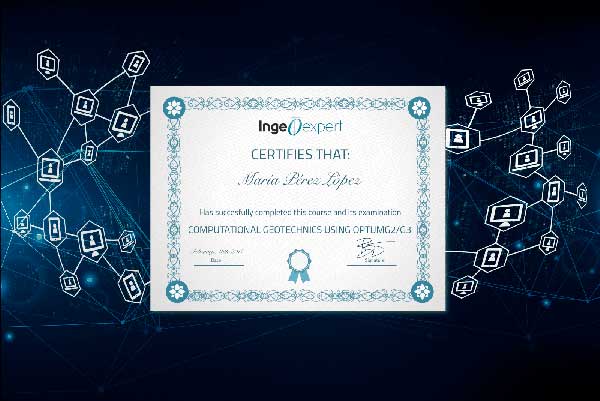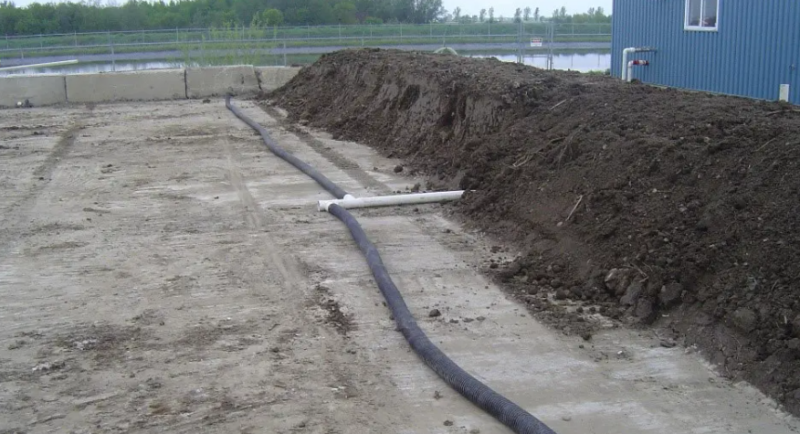Introduction
There are numerous contaminated sites all around the world where groundwater and/or soil has been contaminated as a result of industrial operations. Most governments in developed countries have developed guidelines and regulations for the assessment and remediation of contaminated sites. This course will provide the participants with the scientific background knowledge and practical procedures for the assessment and remediation of contaminated sites (groundwater and soil).
Objectives
The main objective of this course is to introduce attendees to the background information, theoretical knowledge, and practical considerations related to soil and groundwater contamination, as well as remediation guidelines and technologies. The specific objectives are to provide:
- Review of regulatory context and key legislations.
- Basic concepts and principles to soil and groundwater.
- Overview of the common contaminants in soil and water, their characteristics and pathways.
- Review of site investigation methods, and soil and groundwater sampling and analysis procedures.
- Overview of conceptual models for site assessment and soil and groundwater remediation guidelines.
- Basic and practical knowledge on conventional and innovative soil and groundwater remediation methods, and developing a remedial action plan.
Module 1. Introduction, Statement of the problem, and Regulatory context.
Module 2. Theoretical Background Knowledge
- – Soil and groundwater – Basic concepts
- – Contaminants and their environmental properties
- – Overview of soil and groundwater sampling and analysis procedures
- – Quality Assurance/Quality Control plans
- – Overview of contaminant fate and transport in porous media
- – Overview of Environmental Risk Assessment: Source/Exposure Pathways/Receptor
- – Developing a conceptual site model (CSM)
Module 3. Environmental Site Assessment (ESA)
- – ESA Standards
- – Risk Assessment approach
- – Soil and groundwater remediation guidelines
- – Sampling strategies, sample collection and analysis
Module 4. Modeling Approaches and Methodologies
- – Overview of modeling methodologies for subsurface fate and transport of contaminants
- – Environmental risk assessment
- – Uncertainty
- – Applicable models
- – Risk management
Module 5. Overview of Remediation Technologies
- – Natural Attenuation/Intrinsic Remediation
- – In Situ Treatment
- – Bioremediation
- – Soil Vapor Extraction
- – Phytoremediation
- – Groundwater Pump & Treat
Majid Sartaj
Majid Sartaj is a registered Professional Engineer and a faculty member at Civil Engineering Department of the University of Ottawa. He holds a BSc degree in Civil Eng., and a MSc and PhD degree in Environmental Eng. Dr. Sartaj has more than 20 years of experience in academia as well as consulting in Environmental Engineering and Assessment. During this time, he has taught courses on the design of water & wastewater treatment, solid waste management, environmental impact assessment, environmental site assessment, and site and field investigation.
His research areas include sustainable solid waste management (SWM) technologies, with the main focus on Bioreactor Landfilling, remediation of contaminated soils, Environmental Assessment of Contaminated sites, the application of adsorption and Ion-Exchange processes for removal of contaminants, and modeling their fate and transport in the environment. Dr. Sartaj is the author or co-author of around 100 research publications in peer-reviewed journals and conferences. He has supervised or co-supervised more than 40 graduate students. Dr. Sartaj has been an active participant and organizer of several national and international conferences.
The course is delivered online through our easy-to-use Virtual Campus platform. For this course, a variety of content is provided including:
– eLearning materials
– Videos
– Interactive multimedia content
– Live webinar classes
– Texts and technical articles
– Case studies
– Assignments and evaluation exercises
Students can download the materials and work through the course at their own pace. We regularly update this course to ensure the latest news and state-of-the-art developments are covered, and your knowledge of the subject is current.
Live webinars form part of our course delivery. These allow students and tutors to go through the course materials, exchange ideas and knowledge, and solve problems together in a virtual classroom setting. Students can also make use of the platform’s forum, a meeting point to interact with tutors and other students.
The tutoring system is managed by email. Students can email the tutor with any questions about the course and the tutor will be happy to help.
Basic knowledge in Math and Science required. The participants should have a general knowledge about environmental contaminants and their properties in addition to background knowledge in soil (different types of soils, porosity, etc.) and groundwater (groundwater hydraulics).
Once a student finishes the course and successfully completes the assignments and evaluation tests, they are sent an accreditation certificate. The certificate is issued by Ingeoexpert to verify that the student has passed the course. It is a digital certificate that is unique and tamper-proof – it is protected by Blockchain technology. This means it is possible for anyone to check that it is an authentic, original document.
You will be able to download the certificate in an electronic format from the Virtual Campus platform. The certificate can be forwarded by email, shared on social networks, and embedded on websites. To see an example, click here.
- – Environmental/Geo-environmental Engineers
- – Scientists
- – Consultants
- – Industrial Staff
- – Technicians & technologists
- – Regulators Reviewing & Accepting Risk Standards being applied to the contaminated sites.
Introduction
There are numerous contaminated sites all around the world where groundwater and/or soil has been contaminated as a result of industrial operations. Most governments in developed countries have developed guidelines and regulations for the assessment and remediation of contaminated sites. This course will provide the participants with the scientific background knowledge and practical procedures for the assessment and remediation of contaminated sites (groundwater and soil).
Objectives
The main objective of this course is to introduce attendees to the background information, theoretical knowledge, and practical considerations related to soil and groundwater contamination, as well as remediation guidelines and technologies. The specific objectives are to provide:
- Review of regulatory context and key legislations.
- Basic concepts and principles to soil and groundwater.
- Overview of the common contaminants in soil and water, their characteristics and pathways.
- Review of site investigation methods, and soil and groundwater sampling and analysis procedures.
- Overview of conceptual models for site assessment and soil and groundwater remediation guidelines.
- Basic and practical knowledge on conventional and innovative soil and groundwater remediation methods, and developing a remedial action plan.
Module 1. Introduction, Statement of the problem, and Regulatory context.
Module 2. Theoretical Background Knowledge
- – Soil and groundwater – Basic concepts
- – Contaminants and their environmental properties
- – Overview of soil and groundwater sampling and analysis procedures
- – Quality Assurance/Quality Control plans
- – Overview of contaminant fate and transport in porous media
- – Overview of Environmental Risk Assessment: Source/Exposure Pathways/Receptor
- – Developing a conceptual site model (CSM)
Module 3. Environmental Site Assessment (ESA)
- – ESA Standards
- – Risk Assessment approach
- – Soil and groundwater remediation guidelines
- – Sampling strategies, sample collection and analysis
Module 4. Modeling Approaches and Methodologies
- – Overview of modeling methodologies for subsurface fate and transport of contaminants
- – Environmental risk assessment
- – Uncertainty
- – Applicable models
- – Risk management
Module 5. Overview of Remediation Technologies
- – Natural Attenuation/Intrinsic Remediation
- – In Situ Treatment
- – Bioremediation
- – Soil Vapor Extraction
- – Phytoremediation
- – Groundwater Pump & Treat
Majid Sartaj
Majid Sartaj is a registered Professional Engineer and a faculty member at Civil Engineering Department of the University of Ottawa. He holds a BSc degree in Civil Eng., and a MSc and PhD degree in Environmental Eng. Dr. Sartaj has more than 20 years of experience in academia as well as consulting in Environmental Engineering and Assessment. During this time, he has taught courses on the design of water & wastewater treatment, solid waste management, environmental impact assessment, environmental site assessment, and site and field investigation.
His research areas include sustainable solid waste management (SWM) technologies, with the main focus on Bioreactor Landfilling, remediation of contaminated soils, Environmental Assessment of Contaminated sites, the application of adsorption and Ion-Exchange processes for removal of contaminants, and modeling their fate and transport in the environment. Dr. Sartaj is the author or co-author of around 100 research publications in peer-reviewed journals and conferences. He has supervised or co-supervised more than 40 graduate students. Dr. Sartaj has been an active participant and organizer of several national and international conferences.
The course is delivered online through our easy-to-use Virtual Campus platform. For this course, a variety of content is provided including:
– eLearning materials
– Videos
– Interactive multimedia content
– Live webinar classes
– Texts and technical articles
– Case studies
– Assignments and evaluation exercises
Students can download the materials and work through the course at their own pace. We regularly update this course to ensure the latest news and state-of-the-art developments are covered, and your knowledge of the subject is current.
Live webinars form part of our course delivery. These allow students and tutors to go through the course materials, exchange ideas and knowledge, and solve problems together in a virtual classroom setting. Students can also make use of the platform’s forum, a meeting point to interact with tutors and other students.
The tutoring system is managed by email. Students can email the tutor with any questions about the course and the tutor will be happy to help.
Basic knowledge in Math and Science required. The participants should have a general knowledge about environmental contaminants and their properties in addition to background knowledge in soil (different types of soils, porosity, etc.) and groundwater (groundwater hydraulics).
Once a student finishes the course and successfully completes the assignments and evaluation tests, they are sent an accreditation certificate. The certificate is issued by Ingeoexpert to verify that the student has passed the course. It is a digital certificate that is unique and tamper-proof – it is protected by Blockchain technology. This means it is possible for anyone to check that it is an authentic, original document.
You will be able to download the certificate in an electronic format from the Virtual Campus platform. The certificate can be forwarded by email, shared on social networks, and embedded on websites. To see an example, click here.
- – Environmental/Geo-environmental Engineers
- – Scientists
- – Consultants
- – Industrial Staff
- – Technicians & technologists
- – Regulators Reviewing & Accepting Risk Standards being applied to the contaminated sites.
More info
Finish this course and get a certificate based on Blockchain
Soil and groundwater remediation

Blockchain technology makes the certificate incorruptible, enabling companies to verifiy its autenticity.





Reviews
There are no reviews yet.